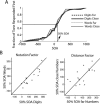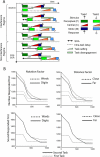Dynamics of the central bottleneck: dual-task and task uncertainty
- PMID: 16787105
- PMCID: PMC1481521
- DOI: 10.1371/journal.pbio.0040220
Dynamics of the central bottleneck: dual-task and task uncertainty
Abstract
Why is the human brain fundamentally limited when attempting to execute two tasks at the same time or in close succession? Two classical paradigms, psychological refractory period (PRP) and task switching, have independently approached this issue, making significant advances in our understanding of the architecture of cognition. Yet, there is an apparent contradiction between the conclusions derived from these two paradigms. The PRP paradigm, on the one hand, suggests that the simultaneous execution of two tasks is limited solely by a passive structural bottleneck in which the tasks are executed on a first-come, first-served basis. The task-switching paradigm, on the other hand, argues that switching back and forth between task configurations must be actively controlled by a central executive system (the system controlling voluntary, planned, and flexible action). Here we have explicitly designed an experiment mixing the essential ingredients of both paradigms: task uncertainty and task simultaneity. In addition to a central bottleneck, we obtain evidence for active processes of task setting (planning of the appropriate sequence of actions) and task disengaging (suppression of the plan set for the first task in order to proceed with the next one). Our results clarify the chronometric relations between these central components of dual-task processing, and in particular whether they operate serially or in parallel. On this basis, we propose a hierarchical model of cognitive architecture that provides a synthesis of task-switching and PRP paradigms.
Figures





Comment in
-
Choice and uncertainty clog the bottleneck of central processing.PLoS Biol. 2006 Jul;4(7):e244. doi: 10.1371/journal.pbio.0040244. Epub 2006 Jun 27. PLoS Biol. 2006. PMID: 20076611 Free PMC article. No abstract available.
References
-
- Baars BJ. A cognitive theory of consciousness. Cambridge: Cambridge University Press; 1988. 424 pp.
-
- Baddeley AD. Working memory. Oxford: Clarendon Press; 1986. 289 pp.
-
- Shallice T. From neuropsychology to mental structure. Cambridge: Cambridge University Press; 1988. 462 pp.
-
- Dehaene S, Naccache L. Towards a cognitive neuroscience of consciousness: Basic evidence and a workspace framework. Cognition. 2001;79:1–37. - PubMed
Publication types
MeSH terms
LinkOut - more resources
Full Text Sources
Research Materials

